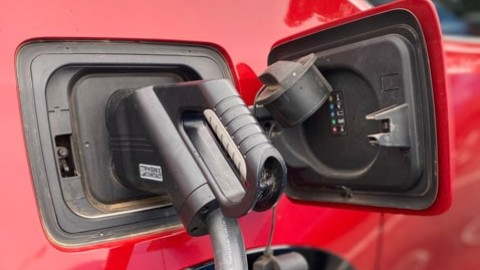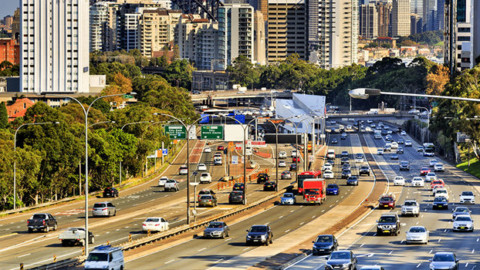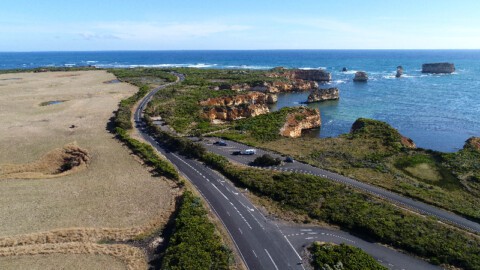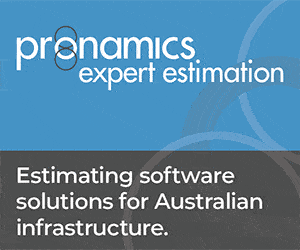by Angela Skandarajah, CEO, Development Victoria
COVID-19 has impacted plans for our cities and how people use them. Here’s what the future of Victoria could look like when it comes to green spaces, housing and urban precincts, and what we need to do to get there.
On the back of a challenging year, it’s clear that governments, industry and individuals are all now assessing the impact and opportunities that our ‘new normal’ presents. As many of us reflect on ‘this time last year’, now is the time to shift our thinking to ‘this time next year’ and beyond.
There is a lot ahead to be excited by, buoyed by what we have seen is a resilient economy and property sector here in Australia. Across the property and development sector, we certainly recognise that there are challenges, and at the same time extraordinary opportunities – particularly in terms of increasing housing affordability and building more sustainable places that will deliver enduring benefits for the economy and our communities.
Smarter and more sustainable homes, good use of land close to infrastructure and services, community places, beautiful and practical open and green spaces – places where people can thrive. We also see the important role our industry must play in
supporting economic recovery through the creation of jobs and delivery of vital infrastructure to support the way we live and work into the future.
Housing affordability and diversity
As the Victorian Government’s property developer, our mission is to deliver great outcomes for people and the state. This includes providing more homes at affordable prices for more Victorians.
At the same time, the housing property market continues to grow, particularly in the regional market that has outperformed metro for the first time in 15 years. Median house prices right across Australia have never been as high, and while this is no doubt a sign of confidence across the market, it also means first homeowners and moderate to low-income earners will continue to struggle to buy a home – unless we all do something different.
At Development Victoria, we’ve committed to providing 25 per cent affordable housing across our total property portfolio, and this is primarily targeted to moderate-income earners. In creating more quality affordable options, we can help buyers into their first home through, for example, shared equity, and give them early access to affordable housing and affordable design.
Record investment in affordable and social housing through Victoria’s Big Housing Build also presents the opportunity for transformational change. We will collaborate with industry, the not-for-profit sector and the community, as well other government agencies, to maximise the social and economic benefits from this investment – and give more people a place to call home.
Sustainability
Living and working through a pandemic has sparked a renewed focus on health, well-being and the environment, and presents a reminder of the interdependence of our actions.
Sustainability must be front and centre in the homes and projects we design and deliver. To achieve real and consistent sustainable outcomes, and as a champion of transformation more broadly in our industry, Development Victoria has mandated a range of best practice initiatives across our entire portfolio. This includes a focus on quality, affordability and comfort; a clear commitment to
protect and restore biodiversity; 30 per cent better than code energy savings, 35 per cent reduction in water use, and 40 per cent renewables on-site.
Green spaces are an integral part of our developments and it’s something that we see as non-negotiable when it comes to urban living. More time spent at home, coupled with a desire for connection, fresh air, and a healthy and active lifestyle, means we need a diversity of green spaces in our developments.
We see it as critical that developers see water-sensitive urban design as the norm and stormwater as a resource, not a burden. It is the most effective way to deliver social and environmental benefits for local flora, fauna and the community – creating smart, adaptable and beautiful green spaces where both people and the environment can grow.
We’re on track to achieve our target of being carbon neutral by 2030 and see this as another way that we can meet consumer demand for more cost-effective and sustainable energy solutions in their homes. Sustainable design is key and can include the implementation of renewable energy technology like solar panels and battery storage, all of which help reduce our carbon footprint and energy bills.
Development Victoria is in a unique position to champion sustainability, innovation and transformation in our industry as we engage with the private sector and government to research and test new ideas to move towards a more sustainable future.
Economic recovery
There is no doubt the development and construction sector has a critical role in supporting the retention and creation of jobs to support economic recovery.
At Development Victoria, this includes project managing the delivery of social and civic infrastructure projects which support tourism, regional development, sports and recreation, and the arts, such as the $1.46 billion phase one Melbourne Arts Precinct Transformation and the $130 million redevelopment and expansion of the State Basketball Centre.
A key part of economic recovery is building community and industry confidence through opportunity. Supporting job opportunities is integral to that confidence, directly through the projects themselves, as well as creating more jobs in places people want to live – and creating places people want to live that are close to existing employment opportunities.
Opportunity will always come from change. The challenge now is to garner our collective expertise across all levels of government, industry and both the private and public sectors, to make a positive impact for our communities.


















